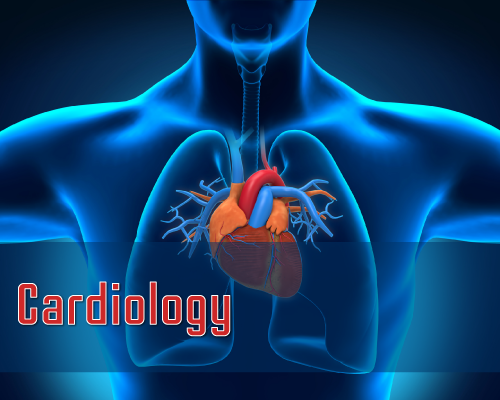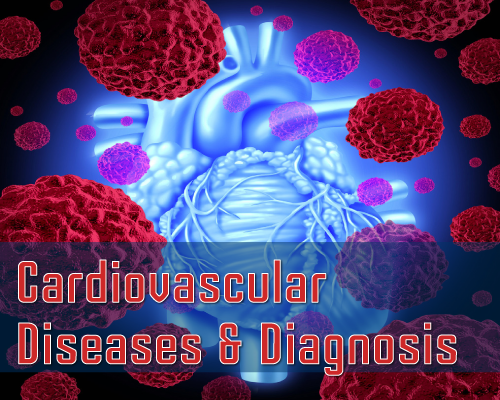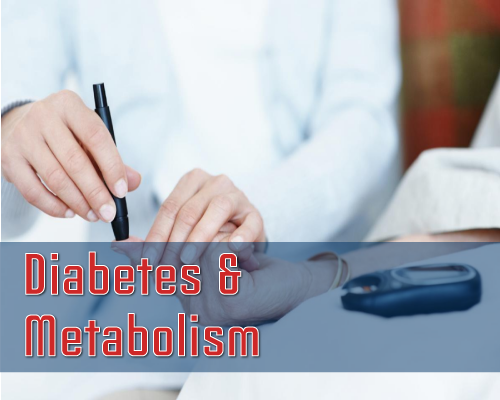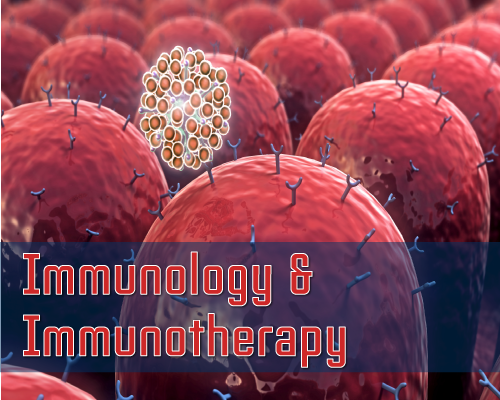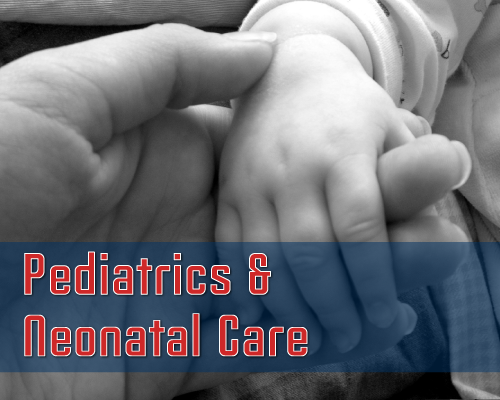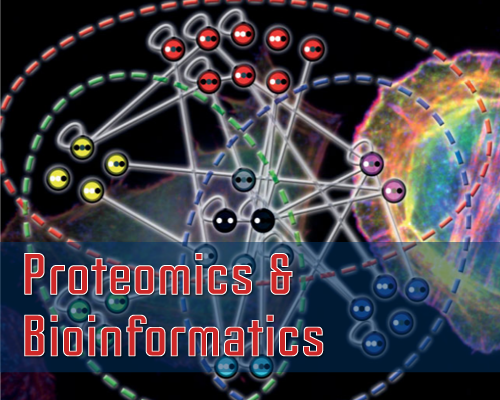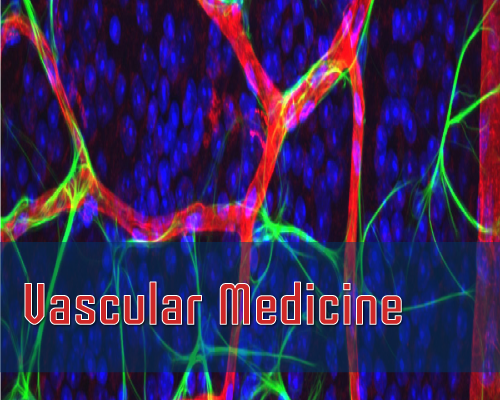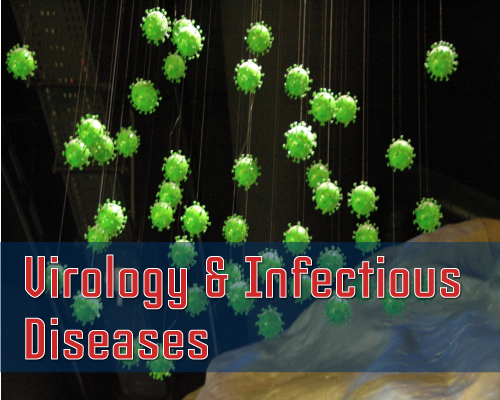Dimitrios G. Mpairaktaris2*, Johannes V. Soulis1# and George D. Giannoglou2#
1Fluid Mechanics Division, School of Engineering, Democritus University of Thrace, Xanthi, Greece
2Cardiovascular Engineering and Atherosclerosis Laboratory, 1st Cardiology Department, AHEPA University; Hospital, Medical School, Aristotle University of Thessaloniki, Thessaloniki, Greece
#Fluid Mechanics Division, School of Engineering, Democritus University of Thrace, Xanthi, Greece
*Address for Correspondence: Dimitrios G. Mpairaktaris, Fluid Mechanics Division, Faculty of Engineering, Democritus University of Thrace, Vas. Sofias 12, 67100 Xanthi, Greece, Tel: +302-541-079-617; E-mail: dmpaira@gmail.com; ORCID ID: orcid.org/0000-0002-3889-8747
Dates: Submitted: 23 May 2018; Approved: 22 June 2018; Published: 25 June 2018
Citation this article: Mpairaktaris DG, Soulis JV, Giannoglou GD. Unsteady LDL Transport through Patient-Specific Multi-Layer Left Coronary Artery. Int J Clin Cardiol Res. 2018;2(2): 039-049.
Copyright: © 2018 Mpairaktaris DG, et al. This is an open access article distributed under the Creative Commons Attribution License, which permits unrestricted use, distribution, and reproduction in any medium, provided the original work is properly cited.
Keywords: Patient-specific; Left coronary artery; Multi-layer arterial wall; Low density lipoprotein transport; Atherosclerosis
Abstract
Aims: The objective of the study is to study the transport and distribution of Low Density Lipoprotein (LDL) within patient-specific multi-layer arterial wall model under unsteady flow using computational fluid dynamic analysis.
Methods: A Left Coronary Artery (LCA) patient-specific model was incorporated. Both flow-mass transport equations in lumen as well as flow-mass transport equations within the patient-specific multi-layer arterial wall are numerically analyzed.
Results: The lumen-side LDL concentration preferably occurs at the concave geometry parts denoting concentration polarization. The Average Wall Shear Stress (AWSS) is not the only factor that can determine the lumen-side concentration of LDL. Increased time-averaged luminal concentration develops mainly in the proximal rather than to distal segment flow parts. The LDL concentration at the endothelium/intima interface is substantially lower, almost 90 times, than its value at lumen/endothelium interface. The concentration drop across the intima layer is negligible, whereas the concentration reduction across the Internal Elastic Layer (IEL) is remarkable. LDL concentration values at the IEL/media interface are one order of magnitude smaller to ones occurring at the intima layer.
Conclusion: The transportation of LDL through the multi-layer arterial wall is affected by the flow pattern itself, the arterial wall thickness and the physical values of the layers.
Nomenclature
C: concentration (gr/l); : average concentration gr/l; D: diffusivity (m2/s); D’ : diffusivity per unit length (m/s); Δp: pressure drop (N/m2); J: flux (m/s); K: permeability (m2); K’: solute lag; L: hydraulic conductivity (m2 s/gr); L”: thickness (m); R: radial location from the centerline (m); p: pressure (N/m2); r: constant consumption rate; u: velocity (m/s)
Subscripts
l: lumen; lag: coefficient; o: inlet; p: plasma; s: solute; v: volume; eff: effective property; w: wall; in: instantaneous.
Greek Symbols
μ: molecular viscosity (Ρa s); σd: osmotic reflection coefficient of the endothelium; σf: solvent reflection coefficient; ρ: density (Kg/m3); ε: porosit
On the data basis taken from National Health and Nutrition Examination Survey (NHANES) 2009 to 2012, an estimated 15.5 million Americans over 20 years of age have coronary heart disease [1]. It is widely accepted that the cardiovascular disease, in general, is associated with atherosclerosis and the real causes of atherogenesis have not yet fully been established. The main risk factor for this disease is considered to be the transportation of Low Density Lipoprotein (LDL) across the arterial wall. The mechanism through which the mass is transported from lumen to the multi-layer wall needs to be elucidated.
Several studies have proved that the flow in coronary arteries is locally disturbed by the formation of complex secondary and recirculation flows. In turn, these flows create regions of very low Wall Shear Stress (WSS) [2] which are sceptical to atherosclerotic plaque growth [3-5]. However, WSS is not the only factor that determines the formation of plaque through luminal and arterial LDL accumulation [6]. Other factors, that probably affect the concentration changes at endothelium interface, are the particular flow pattern itself [6], the mechanism through which the oxidized LDL species lead to foam cell formation [7] and the different physical parameters of the arterial wall from layer to layer [7].
Numerous computational models have been applied for idealized arteries [8-18]. In spite of the great technological advances in recent years, particularly in cardiovascular imaging and computational analysis, scientists have been empowered to numerically simulate realistic arteries [7,19-21]. LDL transport through the artery wall based on idealized geometries implies that the influence of the geometry on the flow pattern is not taken into account. Henceforth, regions of low WSS cannot be properly estimated, which in turn it leads to unsatisfactory estimations of the LDL distribution at the luminal side as well as inside to the arterial wall.
It is of significant importance to assess whether unsteady, in comparison to steady flow, has an important impact on LDL transport process from lumen to multi-layer wall. The long-term LDL transport is a central processing unit time consuming process. This, in turn, increases the computational demand. However, no matter how difficult the task is, current work aims to quantify the oscillating LDL concentration and its distribution within patient-specific multi-layer arterial wall. Current flow-mass transport analysis refers to a 3D Left Coronary Artery (LCA) patient-specific segment under oscillating pulse wave form for resting flow condition. Both flow-mass transport equations in lumen as well as flow-mass transport equations within the patient-specific multi-layer arterial wall are numerically analysed.
Methods
Acquisition of anatomy data
The LCA patient specific model was derived by the IVUS Angio tool which has been previously validated [22]. The basis for generating 3D geometry is the creation of numerous closed 3D curves using Rhinoceros 4.0 (Figure 1A & 1B). The distance between two successive curves is 0.5 mm. The length of the acquired patient-specific segment is 6.2 cm with lumen average diameter of 3.0 mm and average wall thickness of 0.24 mm. The acquired surfaces: endothelium, Internal Elastic Layer (IEL) and adventitia as well as the acquired layers: lumen, intima and media were reconstructed using ANSYS Design Modeler software.
Model construction
The reconstruction of each layer constitutes a difficult task. The acquired LCA model has variable wall thickness. Specifically, the intima layer is comprised of constant wall thickness with 0.012 mm in order to avoid intimal hyperplasia while the media layer has variable wall thickness. The endothelium and IEL were assumed to be semi-permeable biological membranes due to the extremely low wall thickness. The constructed model was imported into appropriate software and the boundary zones were accordingly specified. A mesh sensitive study was performed to solve the fundamental flow-mass transport equations in the lumen. The mesh independence criterion was mainly based in the WSS convergence criterion satisfaction (Figure 2A & 2B). The final grid size was comprised of 586204 nodes, 491164 cells and 1567980 faces for lumen, 753732 nodes, 501984 cells and 1757448 faces for intima layer and 237742 nodes, 1061714 cells and 2245134 faces for media layer.
Flow and mass transport equations
The applied numerical code solves the governing unsteady 3D Navier-Stokes equations for lumen flow and the mass transport equation. The LCA is treated as being of non-elastic, stationary and rigid material. For calculation simplicity, an assumption has been made about the transport properties of the endothelium. This assumption states that solute endothelial permeability coefficient is not shear flow dependent. The intima and the patient-specific media layer are considered to be porous media.
Flow equations
Lumen flow: In their generality the mass flow equation for the lumen is,
ρ (kg/m3) is the blood density; t (s) the time and (m/s) is the lumen velocity vector. The conservation of momentum is,
pl (N/m2 or Pa) is the blood static pressure within lumen; ¯τ (N/m2) the shear stress tensor and ρ (N/m3) the gravitational body force. The shear stress tensor ¯τ is,
-------------------------------------------------complete---------------------------------------------
References
- Murphy MF, Waters JH, Wood EM, Yazer MH. Transfusing blood safely and appropriately. BMJ. 2013; 347: 4303. https://goo.gl/C2Tp3H
- Delaney M, Wendel S, Bercovitz RS, et al. Biomedical Excellence for Safer Transfusion (BEST) Collaborative. Transfusion reactions: prevention, diagnosis, and treatment. Lancet. 2016; 01313-01316.
- Reeves BC, Murphy GJ. Increased mortality, morbidity, and cost associated with red blood cell transfusion after cardiac surgery. Curr Opin Cardiol. 2008; 23: 607-612. https://goo.gl/kY7azR
- Rawn J. The silent risks of blood transfusion. Curr Opin Anaesthesiol. 2008; 21: 664-668. https://goo.gl/512n64
- Murphy GJ, Reeves BC, Rogers CA, Rizvi SI, Culliford L, Angelini GD. Increased mortality, postoperative morbidity, and cost after red blood cell transfusion in patients having cardiac surgery. Circulation. 2007; 116: 2544-2552. https://goo.gl/VxW6dj
- Gould S, Cimino MJ, Gerber DR. Packed red blood cell transfusion in the intensive care unit: limitations and consequences. Am J Crit Care. 2007; 16: 39-48. https://goo.gl/QyKfzq
- Engoren MC, Habib RH, Zacharias A, Schwann TA, Riordan CJ, Durham SJ. Effect of blood transfusion on long-term survival after cardiac operation. Ann Thorac Surg. 2002; 74: 1180-1186. https://goo.gl/LxbG88
- Shehata N, Naglie G, Alghamdi AA, Callum J, Mazer CD, Hebert P, et al. Risk factors for red cell transfusion in adults undergoing coronary artery bypass surgery: a systematic review. Vox Sanguinis. 2007; 93: 1-11. https://goo.gl/zdfXY9
- Wells AW, Mounter PJ, Chapman CE, Stainsby D, Wallis JP. Where does blood go? Prospective observational study of red cell transfusion in north England. BMJ. 2002; 325: 803. https://goo.gl/YvV1fP
- Elmistekawy EM, Errett L, Fawzy HF. Predictors of packed red cell transfusion after isolated primary coronary artery bypass grafting – The experience of a single cardiac center: a prospective observational study. J Cardiothorac Surg. 2009; 4: 20. https://goo.gl/yMq3A4
- Shander A, Moskowitz D, Rijhwani TS. The safety and efficacy of "bloodless" cardiac surgery. Semin Cardiothorac Vasc Anesth. 2005; 9: 53-63. https://goo.gl/ex136q
- Alghamdi AA, Davis A, Brister S, Corey P, Logan A. Development and validation of Transfusion Risk Understanding Scoring Tool (TRUST) to stratify cardiac surgery patients according to their blood transfusion needs. Transfusion. 2005; 46: 1120-1129. https://goo.gl/n25Qev
- Sixty-third World Health Assembly. WHA63.12. Availability, safety and quality of blood products. https://goo.gl/Jhet7n
- Marques MB, Polhill SR, Waldrum MR, Johnson JE, Timpa J, Patterson A, et al. How we closed the gap between red blood cell utilization and whole blood collections in our institution. Transfusion. 2012; 52: 1857-1867. https://goo.gl/Dk8wkz
- Rogers MA, Blumberg N, Saint S, Langa KM, Nallamothu BK. Hospital variation in transfusion and infection after cardiac surgery: a cohort study. BMC Med. 2009; 7: 37. https://goo.gl/JXAQEX
- Assessing the iron status of populations. Geneva: WHO. 2007. https://goo.gl/ReixMb.
- McCullough J. Innovation in transfusion medicine and blood banking: documenting the record in 50 years of transfusion. Transfusion. 2010; 50: 2542-1546. https://goo.gl/XfnvfP
- Gross I, Seifert B, Hofmann A, Spahn DR. Patient blood management in cardiac surgery results in fewer transfusions and better outcome. Transfusion. 2015; 55: 1075-1081. https://goo.gl/fmgt8T
- American society of anesthesiologists task force on perioperative blood management. Practice guidelines for perioperative blood management an updated report by the American society of anesthesiologists task force on perioperative blood management. Anesthesiology. 2015; 122: 241-275. https://goo.gl/u43ncP
- Bracey AW. Blood transfusion in cardiac surgery: a highly varied practice. Transfusion. 2008; 48: 1271-1273. https://goo.gl/ibL8gP
- Anderson L, Quasim I, Soutar R, Steven M, Macfie A, Korte W. An audit of red cell and blood product use after the institution of thromboelastometry in a cardiac intensive care unit. Transfus Med. 2006; 16: 31-39. https://goo.gl/JsrYfF
- Tinegate H, Chattree S, Iqbal A, Plews D, Whitehead J, Wallis JP. Ten-year pattern of red blood cell use in the North of England. Transfusion. 2013; 53: 483-489. https://goo.gl/CkwVvT
- Brevig J, McDonald J, Zelinka ES, Gallagher T, Jin R, Grunkemeier GL. Blood transfusion reduction in cardiac surgery: multidisciplinary approach at a community hospital. Ann Thorac Surg. 2009; 87: 532-539. https://goo.gl/yf5fM1
- Xydas S, Magovern CJ, Slater JP, Brown JM, Bustami R, Parr GV, et al. Implementation of a comprehensive blood conservation program can reduce blood use in a community cardiac surgery program. J Thorac Cardiovasc Surg. 2012; 143: 926-935. https://goo.gl/nVXUqc
- Ferraris VA, Brown JR, Despotis GJ, et al. Society of thoracic surgeons blood conservation guideline task force; update to the society of thoracic surgeons and the society of cardiovascular anesthesiologists blood conservation clinical practice guidelines. Ann Thorac Surg. 2011; 91: 944-982.
- Murphy MF, Goodnough LT. The scientific basis for patient blood management. Transfus Clin Biol. 2015; 22: 90-96. https://goo.gl/rw6BXt
- Gorlinger K, Dirkmann D, Hanke AA. Potential value of transfusion protocols in cardiac surgery. Curr Opin Anaesthesiol. 2013; 26: 230-243. https://goo.gl/wYiKnU
- Snyder-Ramos SA, Mohnle P, Weng YS, et al. Investigators of the multicenter study of perioperative Ischemia, MCSPI Research Group: the ongoing variability in blood transfusion practices in cardiac surgery. Transfusion. 2008; 48: 1284-1299.
- Bennett Guerrero E, Zhao Y, O'Brien SM, Ferguson TB, Peterson ED, Gammie JS, et al. Variation in use of blood transfusion in coronary artery bypass graft surgery. JAMA. 2010; 304: 1568-1575. https://goo.gl/1u9mjv
- Use of blood products for elective surgery in 43 European hospitals. The Sanguis Study Group. Transfus Med. 1994; 4: 251-268. https://goo.gl/KLsYEC
- Moise SF, Higgins MJ, Colquhoun AD. A survey of blood transfusion practice in UK cardiac surgery units. Critical Care. 2001; 5: 5.
- Vonk AB, Meesters MI, van Dijk WB, Eijsman L, Romijn JW, Jansen EK, et al. Ten-year patterns in blood product utilization during cardiothoracic surgery with cardiopulmonary bypass in a tertiary hospital. Transfusion. 2014; 54: 2608-2616. https://goo.gl/i1VqUC
- Covin R, O'Brien M, Grunwald G, Brimhall B, Sethi G, Walczak S, et al. Factors affecting transfusion of fresh frozen plasma, platelets, and red blood cells during elective coronary artery bypass graft surgery. Arch Pathol Lab Med. 2003; 127: 415-423. https://goo.gl/bM4etM
- Stover EP, Siegel LC, Parks R, Levin J, Body SC, Maddi R, et al. Variability in transfusion practice for coronary artery bypass surgery persists despite national consensus guidelines: a 24-institution study. Institutions of the multicenter study of perioperative ischemia research group. Anesthesiology. 1998; 88: 327-333. https://goo.gl/7Lht3T
- Surgenor DM, Churchill WH, Wallace EL, Rizzo RJ, McGurk S, Goodnough LT, et al. The specific hospital significantly affects red cell and component transfusion practice in coronary artery bypass graft surgery: a study of five hospitals. Transfusion. 1998; 38: 122-134. https://goo.gl/SXetjY
- Shander A, Javidroozi M, Naqvi S, Aregbeyen O, Caylan M, Demir S, et al. An update on mortality and morbidity in patients with very low postoperative hemoglobin levels who decline blood transfusion (CME). Transfusion. 2014; 54: 2688-2695. https://goo.gl/5tp28z
- Carson JL, Noveck H, Berlin JA, Gould SA. Mortality and morbidity in patients with very low postoperative Hb levels who decline blood transfusion. Transfusion. 2002; 42: 812-818. https://goo.gl/ESyQ9D
- Hogervorst EK, Rosseel PM, van de Watering LM, Brand A, Bentala M, van der Bom JG, et al. Intraoperative anemia and single red blood cell transfusion during cardiac surgery: an assessment of postoperative outcome including patients refusing blood transfusion. J Cardiothorac Vasc Anesth. 2016; 30: 363-372. https://goo.gl/JXnd58
- Engoren MC, Habib RH, Zacharias A, et al. Effect of blood transfusion on long-term survival after cardiac operation. Ann Thorac Surg. 2002; 74: 1180-1186.
- Murphy GJ, Reeves BC, Rogers CA, et al. Increased mortality, postoperative morbidity, and cost after red blood cell transfusion in patients having cardiac surgery. Circulation. 2007; 116: 2544-2552.
- Goodnough LT, Maggio P, Hadhazy E, Shieh L, Hernandez-Boussard T, Khari P, et al. Restrictive blood transfusion practices are associated with improved patient outcomes. Transfusion. 2014; 54: 2753-2759. https://goo.gl/YnNeyX
- Frank SM, Wick EC, Dezern AE, Ness PM, Wasey JO, Pippa AC, et al. Risk-adjusted clinical outcomes in patients enrolled in a bloodless program. Transfusion. 2014; 54: 2668-2677. https://goo.gl/zrZZHh
- Cosgrove DM, Loop FD, Lytle BW, Gill CC, Golding LR, Taylor PC, et al. Determinants of blood utilization during myocardial revascularization. Ann Thorac Surg. 1985; 40: 380-384. https://goo.gl/5Ryx1f
- Ferraris VA, Ferraris SP. Limiting excessive postoperative blood transfusion after cardiac procedures. A review. Tex Heart Inst J. 1995; 22: 216-230. https://goo.gl/cyFSss
- Muñoz M, Gomez-Ramirez S, Campos A, Ruiz J, Liumbruno GM. Pre-operative anaemia: prevalence, consequences and approaches to management. Blood Transfus. 2015; 13: 370-379. https://goo.gl/7UptWv
- David O, Sinha R, Robinson K, Cardone D. The prevalence of anaemia, hypochromia and microcytosis in preoperative cardiac surgical patients. Anaesth Intensive Care. 2013; 41: 316-321. https://goo.gl/JU4Vi3
- Kim CJ, Connell H, McGeorge AD, Hu R. Prevalence of preoperative anaemia in patients having first-time cardiac surgery and its impact on clinical outcome. A retrospective observational study. Perfusion. 2015; 30: 277-283. https://goo.gl/9njE1f
- Rineau E, Chaudet A, Chassier C, Bizot P, Lasocki S. Implementing a blood management protocol during the entire perioperative period allows a reduction in transfusion rate in major orthopedic surgery: a before-after study. Transfusion. 2016; 56: 673-681. https://goo.gl/URtYfD
- Padmanabhan H, Aktuerk D, Brookes MJ, Nevill AM, Ng A, Cotton J, et al. Anemia in cardiac surgery: next target for mortality and morbidity improvement? Asian Cardiovasc Thorac Ann. 2016; 24: 12-17. https://goo.gl/3VBznN
Authors submit all Proposals and manuscripts via Electronic Form!






